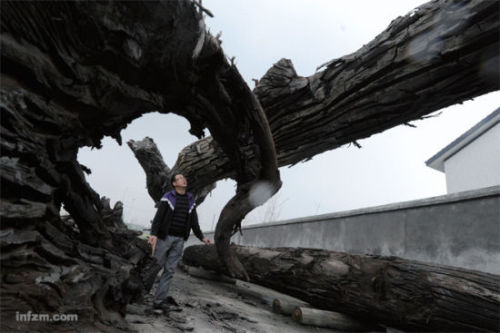3D
Shaggy Carpet is becoming more and more popular in the global market for the
its feature of 3D stereo, perfect curve, convex as well as unique style. The
design of it feeling taste Luxury, simple modern. On
the basis of the rich color combination and practical, the 3D Shaggy carpet occupies
a very important position in the market now. To make you have more selection,
we produce the products into different material. We have the yarn of viscose which
feel similar to real silk, soft and smooth. And the yarn of Viscose mix with Elastic which make
you feel very thick and springy. We also have the microfiber yarn bring you the
feeling of soft and comfortable. Using different yarn
in a family color makes the gradient effect nature and a feast for the eyes.
The
color depth regularly is the characteristic of this kind of carpet, like layers
of waves of the sea. It has many different style for 3D Shaggy, such as Modern
and Flowers. It suits for family, company and any place, which makes bed room, living
room, reading room, furniture and office appliance more warmer and high grade. They
can protect people especially for olds and children from noisy, moist, cold,
slip and so on.
Believe
3D quality a wise choice for you and will make your life more wonderful.
3D Family Carpet,Polyester 3D Family Carpet,Handmade 3D Family Carpet,Microfiber 3D Design Family Carpet SHIJIAZHUANG SUNRISE CARPET CO., LTD. , https://www.sunrise-carpet.com When a piece of wood is not worth the money, the peasants can take it home for firewood. When it is worth it, the government says it is national.
When a piece of wood is not worth the money, the peasants can take it home for firewood. When it is worth it, the government says it is national.
China’s civil law does not explicitly preempt the system, resulting in the absence of any owner or ownerless property. Whenever there is a competition between the government and the people, their ownership often points to the country.
Nanfang Zhouxue Contributing Author Xu Xingzhong wrote: Even if Pengzhou is such a huge ebony, it is rare even in Sichuan, where it is abundant: it is 34 meters long, and its breast diameter is about 1.5 meters. It weighs 60 tons when it is unearthed, and it uses the largest lifting in the southwest. The equipment can be completely transported out of the ravine. According to the current market, such volume means at least several million yuan in wealth.
During the Spring Festival in 2012, Wu Gaoliang, a farmer from Malu Village in Tongji Town, Pengzhou City, Sichuan Province, discovered a small section of this “windfall†in his own contracted land. A month later, Wu Gaoliang began to excavate. He did not expect to kill the local government halfway and took away the ebony, claiming it belonged to the state.
Villagers: Poaching at their doorstep 2012 was the third year of Wu Gaoliang's third year, according to folk tradition, he was either very lucky or very unlucky this year. If he rides a roller coaster, he has caught up with both extremes.
During the Spring Festival, Wu Gaoliang accompanies friends in his field and finds a small section of the ground. The branches are dark and there is a strange smell. Wu and his friends have a rough look. Judging that the branches are just the tip of the iceberg, underground is likely to be buried with big ebony.
The ebony, also known as gloomy wood, is the wood of Nanmu, Hung Hom, Malu and other trees buried in silt due to natural disasters. In the absence of oxygen and high pressure, it was formed by the long process of carbonization for thousands of years. Because of the different tree species, the market value is different. The Phoebe genus of Phoebe genus is the most expensive, up to eight to 100,000 yuan per cubic meter, and the longer the age, the better the preservation and the higher the price.
Subsequent identifications proved that Wu Gaoliang’s discovery of ebony was formed by Nanmu. At the beginning of February 2012, Wu Gaoliang paid a civil expert, who hired a Beijing-based exploration company and discovered a huge ebony underground. Experts estimate that the largest ebony worth millions.
For Wu Gaoliang, the place where ebony is found is literally the "doorway of the house." Maliu Village is located in the Pengzhou mountainous area. A river ditch that belongs to the tributary of the Minjiang River splits the village into two. Wu home lives on the right bank of the river ditch, and the contracting place is the dam on the left side. The straight distance between the two sides is less than 60 meters and the door is open.
What's the problem with digging something in your own home? Wu Gaoliang began to dig ebony. On February 8, 2012, he hired an excavator and began dug for more than five hours from noon. Only two-thirds of the huge ebony was dug. “There was scent just when it was dug out, and I was standing at my doorstep,†he recalls.
The project of getting rich overnight may be known all of a sudden. Wu Gaoliang said that during the excavation, someone in the town had found him and he was interested in digging ebony, but he refused. Wu Gaoliang later regretted this decision quite a bit, because things started to change from then on.
That night, Tongji Town police station came to two **, Wu had to stop.
“We received a report from the people the same day, and some people picked it up privately.†Gao Xizhi, a deputy head of Tongji Town Party Committee, told the Southern Weekend reporter that after receiving this information, the town informed the police station. He explained that Pengzhou was rich in mineral resources and that the pirates were once very rampant. The local government was fighting against private mining like black.
However, in the face of digging half of ebony, Tongji Town is also not sure whether it counts as mineral resources. "But we think it always has a premise that it belongs to state-owned property." Tongji Town has made such a definition and dispatched police to protect the site. Wu Gaoliang realized that something at the door of his house may not belong to himself.
Government: "Cooked raw rice is also swallowed"
Wu Gaoliang did not sleep well overnight. ** said that as long as he stopped not digging, follow-up to the town government to deal with, "they do not pursue illegal activities."
In the following days, the township government leaders came to the door and repeatedly persuaded Wu Gaoliang to abandon the ebony. Wu Jia organized relatives to stop the town government from bringing out ebony.
The relevant personnel told Wu Gaoliang that according to the General Principles of Civil Law, underground ebony is owned by the state. The town government is also willing to make some concessions. Then Tongji Town party committee member **Yang Yong told Wu Gaoliang that the town would dig up Wumu and would give him the highest bonus. His previous investment will be compensated, even in the future. Into the museum exhibition, below there will be a sign with his name engraved, so that Wu Gaoliang "flown to the world."
However, the two sides failed to reach an agreement on a repeated basis and the situation was once out of control. Zhang Qing, an associate researcher at the Chengdu Institute of Cultural Relics and Archeology who was invited to the site to serve as a consultant, recalled the situation and shook his head: “Wu’s mother has a big shout about the government, what’s so bad, and we’ve all married her. "The situation quickly escalated, the town government sent **, **, and 120 ambulances were ready.
Fortunately, there was no conflict.
On February 20, 2012, a total of seven ebony trees, including the one with a maximum length of 34 meters, were transported from Wu Gaoliang's contracted land and all were transported to Tongji Town.
Interestingly, the Wu family's block has caused the town government to make a decision to “protect†the ebony. Xiao Liying, deputy director of the Pengzhou Municipal Cultural Relics Protection Management Office, who is also a consultant, said that because the ebony was 34 meters long and the lifting program had raised sawing and sectioning, the government opposed it and insisted on keeping the ebony intact.
The government has hired the largest crane truck in the southwest region through an open comparison and selection scheme. There is one such vehicle in Chengdu and one in Chongqing. The cost of moving one day is RMB 10,000. Xiao Liying said: At that time, there was no such vehicle in the southwest, and the government would also look for it from other parts of the country. "In the government's words, I will swallow it, and I must pick it up."
Tongji Town Party Committee Deputy Governor Gao Xianzhi told the Southern Weekend reporter that not only did the lifting equipment cost money, but in order to transport 34 meters of ebony from the ravine, the poles were removed and some poles were restored. The ebony was transported from Maliu Village to Tongji. The total cost of the town is close to 1 million.
"State-owned" does not always claim that Naomu is state-owned and does not pass through the town alone. In recent years, large-scale ebony found in Chongzhou, Shifang and Nanchong areas of Sichuan Province were all nationalized by the local government.
However, this is not the government's consistent claim. At least when the value of ebony has not yet appeared, the figure of the government does not appear.
The director of the Chengdu Wumu Museum and Taiwanese businessman Lu Yujie have been engaged in the collection and protection of ebony since the 1990s. He told the Southern Weekend reporter that since ancient times, ebony has been a valuable timber in the folk, Sichuan has a saying “There is a box of jewellery, not as good as a ebony partyâ€, but it really made the market value of ebony comparable to that of jewellery. In his memory, in the 90s of last century, people did not attach much importance to ebony.
In 1994, Lu Yijie had used an exchange of briquettes for an ebony in an old grandfather's home in Guanghan. "Because he was using ebony as firewood, I proposed using coal to trade with him." The grandfather said that this root of ebony burned for two months and Lu Yujie exchanged the corresponding honeycomb coal in exchange. "A total of 1,000, then the briquette It's so cheap, it's only about 1 hair."
During that period, Lu Shujie not only acquired ebony from individuals, but also engaged in excavations. Sometimes, the dredging ship found the ebony sinking in the water, and Lu Jiejie bought the “Shawanzi†dredged. “We dig ebony and dredge sand for them.†The government has never interfered.
The increase in ebony prices began around 2000, when Lu Jiejie’s Wumu Museum was a small success. It coincided with the “Western China Forum†held in Chengdu. Lu Yijie exhibited five pieces of ebony artworks, which triggered intense attention. After that, “wood†became a “wooden wealth†and the market rushed.
Lu Jijie recalls that about 2000 yuan per ebony will be collected, and in 2001 it would be more than 2,000 yuan. “The next year or two will turn up 4000, 8000, and 12,000.†Now, ebony is due to its species, age, and quality. In contrast, the prices are different, but the lower is also nearly 10,000 yuan per party, like the well-preserved nanmu ebony, the price is about 100,000 per square, compared to the previous rise of more than tens of times. There are even manufacturers of Nanmu ebony on Alibaba.com with a staggeringly high price: 800,000 per party!
“The current ebony market is completely disorderly,†said Lu Jiejie, who has rarely acquired ebony at the local level, not only because of the high prices but also because of the unfair local forces. Now, an industrial chain has been formed from the place of production in Sichuan to the place of consumption in Beijing and Shanghai. Once ebony is discovered in Sichuan, complex local forces will intervene and all kinds of chaos will accumulate.
At this time, the government began to gradually pay attention to ebony. After large-scale ebony was discovered, the government would intervene with a protective attitude and inevitably conflicted with personal interests. Attorney Yu Yuanjun from Sichuan Gaoyang Law Firm told the Southern Weekend reporter that he has recently consulted for similar cases for five to six years.
The raw rice cannot be swallowed for 34 meters, which is equivalent to the height of the 11-storey building. So far, Tongji Town has not had such a high floor. After ebony arrived at Tongji, many people came to watch it.
However, for Tongji Town, the "cooked rice" cannot swallow.
The Pengzhou City Administration Department and the Department of Land and Resources all stated that there was no basis for the disposal of ebony. Tongji Town also did not have the right to dispose of it, so it reported to Pengzhou City (municipal party committee and municipal government) and asked the State Assets Administration Bureau to lead the cultural management department to carry out the next step of resettlement. However, several months have passed and no .
The first question is: What is ebony?
Most of the ebony formation time ranged from 3,000 to 8,000 years. Although it was a long time, it was not enough to become a plant fossil. Similarly, it is not a mineral. Therefore, the protection of ebony does not apply to the Regulations on the Protection of Paleontological Fossils and the Mineral Resources Law of the People's Republic of China.
“European ebony found in various places is generally looking for cultural relics departments, but in fact it is not cultural relics.†Zhang Qing said that cultural relics refer to the products left behind by human activities, belonging to the social sciences, ebony is a natural formation, is transforming into plant fossils. The intermediate product belongs to the natural sciences.
According to Xiao Liying, in the 1990s, the Chengdu Municipal Administration of Cultural Relics Protection had added one article: “Old and famous trees are protected by reference to cultural relics,†but after the promulgation of the New PRC Protection of Cultural Relics Act in 2002, the discipline’s In the wild, ancient trees and famous trees are not protected by cultural relics. At the same time, the revised local regulations of Chengdu have deleted this clause.
However, in the eyes of scholars such as Zhang Qing and Xiao Liying, ebony contains abundant ancient ecological information and is a non-renewable “resource†that should still belong to the state.
The boldest attempt in Chengdu was to try to formulate local regulations: In 2004, the Cultural Affairs Department of the Municipal Cultural Bureau took the lead and drafted the “Interim Measures for the Protection and Management of Chengdu’s Wumu Resources†in conjunction with experts. However, this approach was not formally introduced.
Public is a "big basket"
Yu Yuanjun has represented several cases of ebony lawsuits. The agent thought to adopt "contrary thinking": the government advocates Wumu state-owned and should have clear laws and regulations. If there is no clear rule, the principle of not arguing with the people for the benefit of the government should be used for private discovery. Justified. In 2010, Yu Yuanjun represented a similar case in Panzhihua, Sichuan, but his party lost.
The Southern Weekend reporter discovered that the ebony that has taken place in many areas in Sichuan has been nationalized. The official articles cited are all the same terms. That is, Article 79 of the General Civil Code of the People's Republic of China implemented since 1987: Unknown buried and concealed objects belong to the state.
The domestic civil law scholars interviewed did not share the same views.
Sun Xianzhong, a researcher at the Institute of Law of the Chinese Academy of Social Sciences, believes that ebony can be identified as a buried property whose ownership is unknown, and the “nation†obtains its ownership. The reason is that other centralized treatment programs are not legally regulated and the provisions of Chinese law.
Yin Tian, ​​a professor at the School of Law at Peking University, believes that both "buried" and "hidden" are human behaviors. The ebony system is naturally formed and does not belong to buried objects. "The burial means that it was originally owned by everyone and was buried underground by all people."
However, all the same goes: the ebony will fall into the public basket -
Yin Tian advocated ebony as a subject and should be enjoyed by the landowner. Land in China is not personally owned, so ebony can belong to the state or collective, but it will not be Wu Gaoliang’s personal.
Meng Qinuo, a professor at Wuhan University’s (Weibo) Law School, said that although our country’s law does not provide a clear explanation for the absence of the subject, there are basically two situations: there is no owner and the owner is unclear, “(ebony) is a standard no-owner. "He also believes that "nothing is owned by the state. This is the practice in our country."
It was precisely on the issue of state ownership that the property law was difficult to pass in 2007. (See the newspaper's “Legislative History of China's Real Right: March 22, 2007: It Has Never Been Such a Twisting, Has Never Been So Firmâ€)
"When I was enacting legislation, I repeatedly objected to blindly treating all non-substances as ownership of the 'state' because this practice was often unnecessary and impossible to achieve universally," Sun Xianzhong said. Meng Qinguo, for example, said that like garbage, there is no such thing as the state, the state can not and does not need to advocate the state.
The property rights law also evades the “preemptive†system that is clearly provided for in the civil laws of many countries and regions, that is, for owners without ownership, the preemptor acquires ownership first.
The principle of "preemption" was established as early as in Roman law and stems from the ancient natural way of mankind's acquisition of property and is still widely present in people's daily lives. In fact, scavenger scavenging is a kind of preemptive behavior recognized by the general public.
One scholar explained that the "preemptive" system is clearly in conflict with the state-owned ownership of non-substance, and the property law is ultimately not involved. Therefore, according to the current law, as long as it is "without the main thing," it will fall into the state-owned basket.
Returning to the ebony incident, a comparable example was found in Wu Gaoliang's upper 2 miles: Wu Dengliang, who is from Maliu Village, had an ebony of about 1.8 meters long in the river ditch. He was sent to Pengzhou without any obstruction. The price is good.
In fact, a large number of private excavation and trading of ebony have become the norm of economic activity. The stateless ownership of state-owned assets means that the government will often fall into the category of “grasping the law (selective law enforcement)â€, “deviating managementâ€, and “contributing to the peopleâ€. The dilemma is facing more questions from the community.
After the Wumu in Tongji Town was reported by the media, people were constantly calling to purchase and were wisely rejected by the government. The town government intends to build ebony as a tourist attraction, and has commissioned relevant experts from the Sichuan Academy of Social Sciences to formulate a plan. There is no final decision yet.
On weekdays, the huge ebony lies quietly in the bus stop of the town that is not activated, and the door is locked. Wu Gaoliang can only stand and watch outside the door. There is only one question that he cares about: Does the government's promise of the highest reward still count? 



